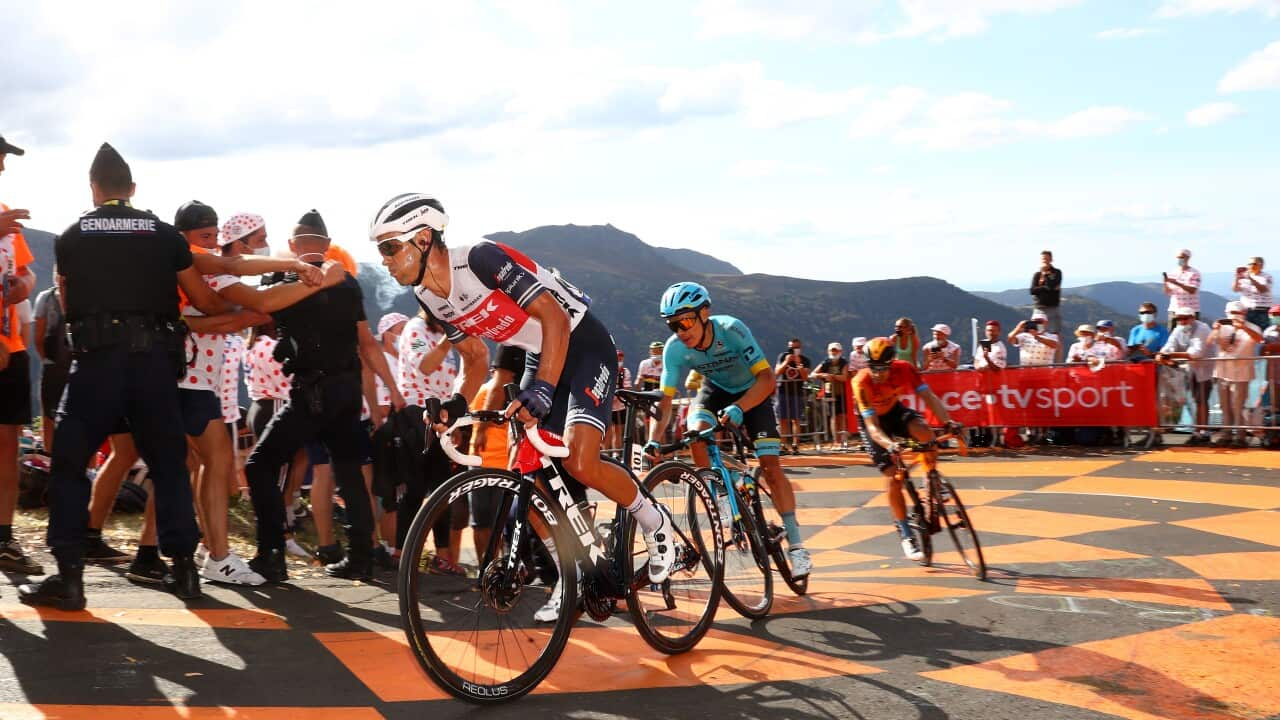High in the mountains, the air feels different, thinner. Ragged gasps for breath follow one another more quickly than when you started climbing, and you don't have the same punch in your legs.
The Tour de France heads over 2,000 metres in altitude tonight, up to the dizzying 2,304 metre peak of the Col de la Loze, after topping out at exactly 2000 metres on the Col de la Madeleine earlier in the stage. While the steep inclines and the length of the climbs will take their toll, perhaps the most decisive factor will be the altitude and how the contenders for the yellow jersey will adapt to it.
2019 was a case study in this phenomenon, seven times the race went over 2,000 metres, the rough point at which experts say the effects of the lesser oxygen in the air really begin to hurt riders. It was no surprise that we saw Egan Bernal, born at 2,650 metres above sea level, take out the race with an attack to the highest peak of the Tour, the Col d'Iseran (2,770 metres).
The sensation of having to gulp in the oxygen is not because the air is 'thinner' but because the atmospheric pressure is lower. If you take the same volume of air, there's going to be less oxygen contained in there, and since oxygen is the fuel for exercise, it reduces the amount of power able to be put out.
Another big change that comes at higher altitudes is the ability to recycle lactic acid. So if someone attacks and 'goes into the red', it's going to take longer to recover from it. At high altitudes, it's more difficult to do longer attacks, and more difficult to produce repeat attacks.
The effects can also vary widely between individuals. While Egan Bernal has always excelled when the race reaches the higher climbs, Alejandro Valverde is notorious for struggling on the lofty peaks. Certain riders tend to do better, a lot of it is connected to overall form of course, but there are riders who adapt better than others.
Just looking at recent Tours de France, there are a few standout performers when the air gets thin. Egan Bernal is consistently one of the best, but he's very beaten up at the moment and is unlikely to feature, same goes for his countryman Quintana. Rigoberto Uran and Miguel Angel Lopez are the remaining, in-form Colombians and both have done well in the higher races in the past.
The good news for Aussie fans is that Richie Porte has been good at altitude when he's been in good form, his 2016 Tour de France ride for fifth overall was his best at Grand Tour level, and he was alone with race-winner Froome on the highest peak of the race that year.
Some names that regularly crop up as the best at altitude include Warren Barguil (Arkea-Samsic), Tom Dumoulin (Jumbo-Visma), though for those hoping for Primož Roglič (Jumbo-Visma) or Tadej Pogačar (UAE Team Emirates) to fade in their general classification bids, both were good in the high mountains at the 2019 Vuelta a Espana, and Roglič actually won the highest stage of the Tour in 2017, out-duelling Alberto Contador from the breakaway and taking the stage win.
That was probably one of the starkest representations of a rider struggling at altitude after having gone too deep. The Spanish champion had attacked over to the breakaway after being relayed by his teammates and then went on the attack with Roglič for company before the lights went out and he slipped back rapidly. From driving the pace on the early slopes of the Col du Galibier he finished the stage a minute and 43 seconds behind Roglič .
So while the best climbers are again likely to come out to play on the steep inclines of the Col de la Loze, the added effect of the altitude is one certainly to bear in mind.
The 2020 Tour de France continues with the brutal 170km stage from Grenoble to Méribel (Col de La Loze) - the highest point of this year's Tour is on the menu. Stage 17 begins via SBS On Demand and the SBS ŠKODA Tour Tracker from 8:05pm (AEST) on Wednesday, with the television broadcast set to start at 9:35pm on SBS.





